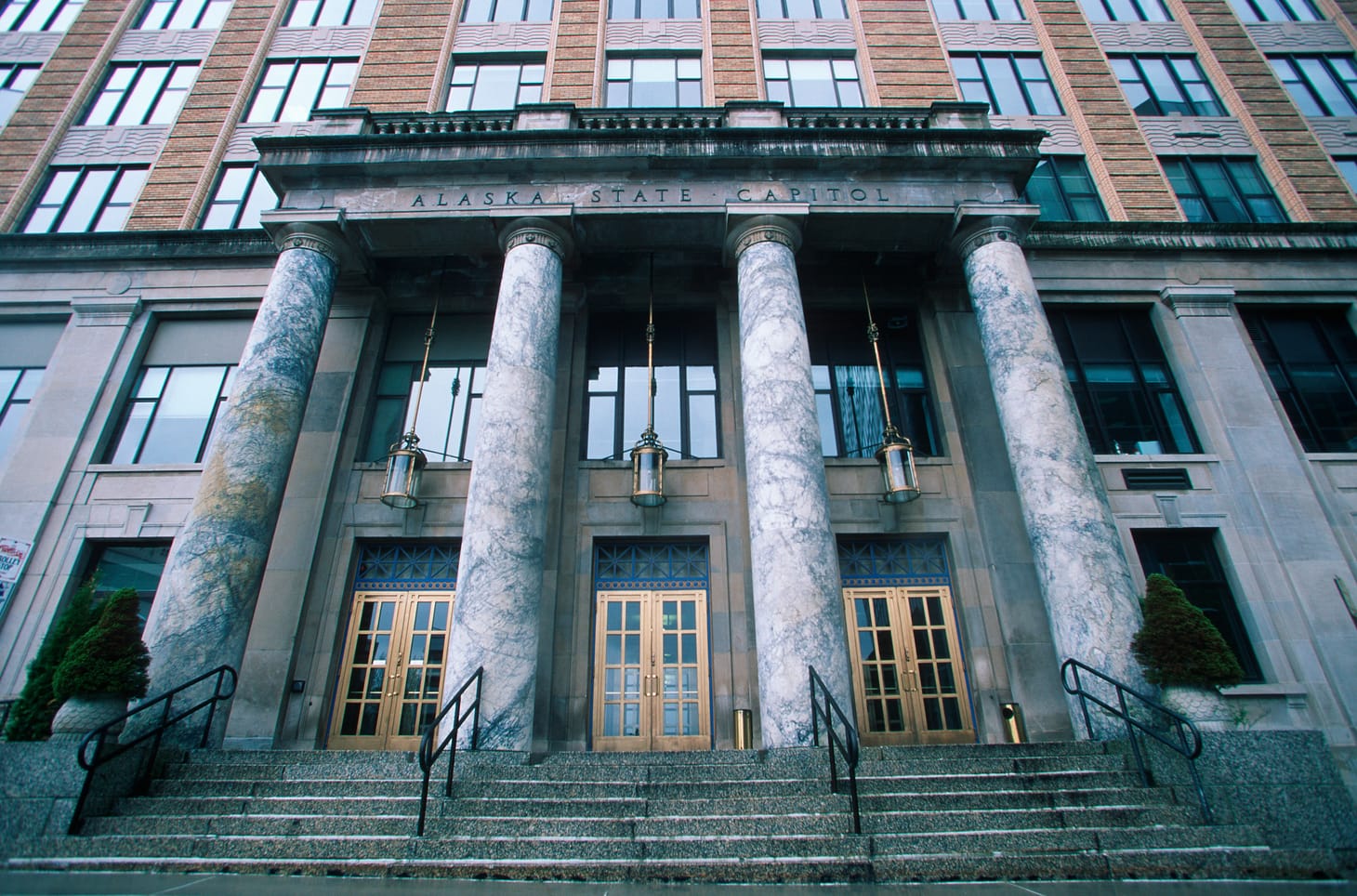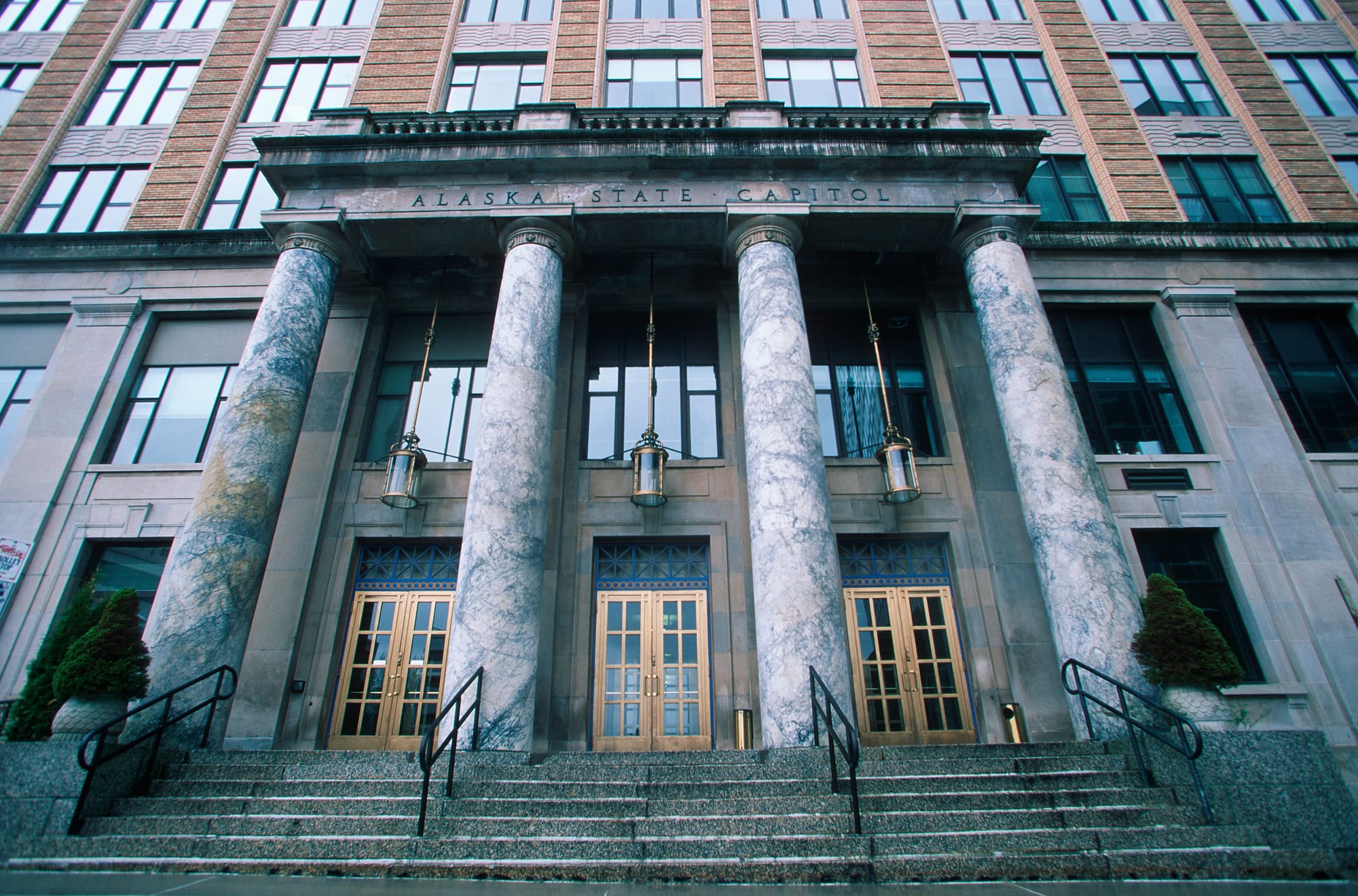Day 15: Do we have common ground?

It’s Tuesday, Alaska — Day 15 of the Alaska Legislative session.
In this edition: Talks on some kind of education deal are underway between the governor and the Legislature’s coalition majorities, but just how much common ground there really can be between the governor’s “Give me everything I want” approach and the Legislature’s “Let’s keep the talk between money and system-altering policy separate” approach is dubious. It’s also worth pointing out that the governor's request to take negotiations behind closed doors came right after his attempt to drum up opposition to a clean school funding bill flopped. Meanwhile, uncertainty continues to rain down from the Trump administration, with a pretty dire warning for a big chunk of the state’s federal workforce.
Current mood: 🫠
‘Do we have common ground?’

Legislative leadership met with the Gov. Mike Dunleavy administration this morning to begin hashing out a deal on education for this session. The move comes after the governor staked out hardline opposition to a clean increase to the per-student funding formula, the base student allocation (BSA), preferred by the House and Senate coalition majorities and, judging by the last two weeks of public testimony, a broad swath of Alaskans.
Over the course of several public hearings, Alaskans have, by and large, called for an increase to the BSA, arguing a big boost in funding is needed to just keep up with years of inflation that have eroded a decade of largely status-quo funding. Districts have also added fuel to the fire by releasing particularly austere budget proposals for life under flat funding, outlining ballooning classes and shuttering scores of schools. It all has drowned out what little opposition the governor’s administration was able to drum up through an email campaign last week. Most accounts I’ve seen put testimony at 10:1 in favor of funding.
At a news conference today, Senate President Gary Stevens said that the governor requested the closed-door meetings, defending the decision to abide by the request as a good-faith effort to work with the administration.
“Well, this was at the insistence of the governor,” Stevens explained. “He asked us, and he asked the four leaders of each caucus to come forward and talk to him. … At this point, we're trying just to work on a more friendly basis with the administration, and the other caucus is to try to find if they have some common ground. That's the key right now. Do we have common ground?”
That’s the big question.
The leading proposal in the Legislature right now is Sitka independent Rep. Rebecca Himschoot’s HB 69, which would boost the BSA to the tune of about $360 million annually while also building in inflation adjustments. While it’s a hefty price tag, supporters are quick to point out that the BSA hasn’t had a significant adjustment since July 2010, when it was raised to $5,960. Since then, inflation has grown by about 45%.
“There’s a lot we can do in education. I don’t think anyone questions that or doubts that,” Himschoot told the Alaska Beacon. “So, in that way, I’m aligned with the governor. We have some things to do. At the same time, we cannot starve the schools for basically 15 years and then point at them and say, ‘Look, they’re failing.’ I refuse to do that.”
The governor’s proposal is not just a fraction of that but also comes with many conservative strings attached. For the grand total of about $117 million in total school funding, Dunleavy is attempting to get legislators to sign off on a broad expansion of public charter schools, force districts to have open enrollment for any student in the state and ban cell phones. None of the funding would go to the BSA, leaving the primary funding tool for all students untouched, and instead, the money would be designated for the governor’s priorities.
The biggest pot of money, about $43 million, would go to homeschool programs, which serve just 17% of students in Alaska.
While homeschooling has gained popularity in the wake of the pandemic, several stories — and a big-time lawsuit — brought to light how the program is being not-so-quietly used to subsidize a small portion of kids’ education at private and religious schools. In some cases, the homeschool distributions were used as direct tuition subsidies, while others used it to put their private school kids in horseriding lessons.
Despite the Alaska Constitution’s prohibition on public funds flowing to private and religious schools, Dunleavy has been a significant booster of the idea and relaxed oversight over the spending. He’s also been cagey about his plans for the charter school system if the Legislature were to give him a blank check to create more, but it’s worth noting the focus on charters didn’t really blow up until the Anchorage School District shut down a charter that was acting as one of the main funnels of public money into religious schools.
But for all his hollering about the plan, he’s done little to win over legislators skeptical of a funding plan that prioritizes a small subsection of generally wealthier, less diverse students through homeschool and charter programs.
Hopefully, there’s more to be said behind closed doors because, as it stands, it sure looks like the governor is demanding a slate of largely unpopular education policies with a far smaller amount of funding tied to it. If not for the governor's eager usage of the veto pen — which we saw him exercise last year when he vetoed a BSA increase — there would be little reason to engage.
At the Senate’s news conference, several legislators made it clear that while they would be willing to meet with the governor, they were also prepared to take the lead on ensuring schools are properly funded.
“We know that every student deserves a well-rounded education and that they should be able to become productive citizens of our communities,” said Sen. Löki Tobin, D-Anchorage, who chairs the Senate Education Committee. “I anticipate that in the weeks to come, you'll see legislation that seeks to fulfill our constitutional duty, which is to ensure our schools have the resources they need to serve every student.”
Follow the thread: The Senate Majority news conference
'Chilling'

The House Judiciary Committee met on Monday to try to get some more clarity on the chaos that is the Trump administration's first two weeks in office. Hearing from several groups, including the Denali Commission, RuralCAP and the union representing more than 11,000 federal workers in the state, things seemed to be ever so slightly less on fire than last week. Some big pots of money, such as the infrastructure money that flows through the Denali Commission to projects in rural Alaska, are thought to be spared from the pause.
But, as with everything in the era of Trump, things are subject to change.
"We're getting new information almost hourly at times," Jocelyn Fenton, the Denali Commission's director of programs, told the committee, adding that while funding may not have been interrupted for everyone, everyone has had to dedicate substantial staff time to navigating the situation. "So far, and I cautiously say this, we think that we're able to move forward with the funding as it was appropriated."
That said, Fenton and others noted that if federal funding does disappear there will be pressure for the state to step in and backfill funding.
A general slowdown seemed to be the best-case scenario for many of the testifiers as they talked about navigating the uncertain and confusing directives coming from the federal government. Jasmine Boyle of RuralCAP told the committee that they believe most of the funding will ultimately arrive but noted that it looks like it will have to go through more approval at the same time that Trump and Musk are trying to eliminate broad swaths of federal employees.
The potential elimination of federal employees was of great concern to David Traver, the head of the Alaska chapter of the American Federation of Government Employees. As a veteran and long-time employee of the VA, he said he has deep concerns about what Trump and Musk have planned for employees. He said he's particularly concerned about the 1,198 federal employees in Alaska who are still on probation and don't have as strong protections against a mass firing. That's about 10% of the total workforce and includes 335 veterans.
"What's happening is chilling. It's just chilling folks," he told the committee, later adding that the probationary employees earn more than $88 million in wages.
And the concern was prescient. Today, Marisa Kabas, the journalist who initially broke the story about the OMB freeze memo, reported today that the federal Office of Personnel Management is planning to push ahead with mass firings.
New — Sources tell me OPM is preparing mass firing of probationary employees after agencies submitted lists of them last week without context. If supervisors want to keep someone on, they need to write a short justification. Directive was high level. They were told not to put any of this in print.
— Marisa Kabas (@marisakabas.bsky.social) 2025-02-04T21:11:10.246Z
One of the striking things at the hearing was the difference between the testifiers and the House majority and the committee's Trump-y Republicans. Where most talked about an emergency with far-reaching impacts — with Traver worrying about what it'll mean for veterans in Alaska, particularly those living in rural communities — the Trumpers seemed to suggest that the concerns were overblown and that it was simply an opportunity for the vague platitudes Republicans seem to fall back on when trying to downplay cuts with talk about efficiencies, synergies and reducing redundancies in the state's non-profit sector.
Rep. Mia Costello, the Anchorage Republican who returned to the Legislature this year after working in the Bronson administration, even asked Traver if they could find a way to hold veterans harmless from the changes.
"I don't know if the answer could be yes," he said.
Stay tuned.
Follow the thread: The House Judiciary hearing on the Trump freeze
The Alaska Memo Newsletter
Join the newsletter to receive the latest updates in your inbox.

